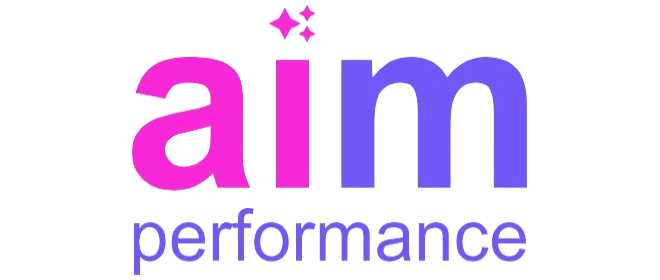In industries reliant on blue-collar workforce, human errors can lead to costly outcomes, including operational inefficiencies, safety risks, and financial losses. However, with the right performance management system in place, organizations can significantly minimize these errors. This blog explores how performance management helps reduce ss among the blue-collar workforce, highlighting the importance of structured processes, continuous feedback, and targeted training.
Understanding the Impact of Human Errors in Blue Collar Industries
Human errors are inevitable in any industry, but they are particularly prevalent in blue-collar sectors due to the hands-on nature of the work. These errors can range from minor mistakes that affect productivity to serious mishaps that compromise safety and lead to costly downtime.
In high-risk industries like manufacturing, construction, or logistics, even small errors can have a ripple effect. A well-designed performance management system can identify patterns and sources of errors, allowing management to take proactive steps to reduce them. By actively monitoring performance and error trends, companies can mitigate risks before they escalate.
Detecting Human Errors Early with Performance Management
One of the key benefits of a performance management system is its ability to detect errors early. Through regular performance evaluations and real-time feedback mechanisms, managers can identify the areas where employees are prone to make mistakes.
By detecting human errors before they escalate, performance management systems prevent costly consequences that may arise from unresolved issues. In blue-collar settings, this early detection is vital for maintaining smooth operations and ensuring that human errors are addressed swiftly and efficiently.
Promoting Accountability through Continuous Feedback
A robust performance management system ensures that employees receive continuous feedback. This feedback loop allows employees to understand their strengths and areas that need improvement, ultimately leading to fewer mistakes on the job.
For blue-collar employees, accountability leads to better focus and attention to detail, reducing the likelihood of human errors. A culture of accountability, reinforced by a strong performance management system, not only improves individual performance but also minimizes the frequency of human errors across the organization.
Training and Development: Building Skills to Reduce Human Errors
Training is one of the most critical components in reducing human errors, and performance management plays a pivotal role in identifying the training needs of the workforce. By assessing performance data, companies can pinpoint specific skills gaps that contribute to errors and provide targeted training to address them.
For blue-collar employees, hands-on training sessions that focus on minimizing mistakes in real-world scenarios are especially effective. This continuous learning process ensures that employees are well-equipped to handle their tasks correctly and efficiently, leading to a reduction in operational mistakes over time.
Real-Time Monitoring and Error Prevention
Modern performance management systems often come with real-time monitoring capabilities that track employee performance on the job. This feature is especially valuable in reducing human errors, as it allows managers to address issues as they arise, rather than waiting for periodic performance reviews.
In a blue-collar setting, real-time data on employee performance can help supervisors intervene quickly to correct unsafe practices or operational inefficiencies. By preventing errors before they occur, real-time monitoring can improve both the safety and productivity of the workforce.
Fostering a Culture of Safety and Precision
In blue-collar industries, safety and precision are paramount. A performance management system can cultivate a culture where safety protocols are rigorously followed, and attention to detail is prioritized. By integrating safety metrics into performance reviews, companies ensure that employees are not only evaluated on their productivity but also on their adherence to safety standards.
When human errors related to safety are caught early and addressed through performance reviews, employees become more vigilant and conscientious in their work. A safety-first culture reduces the risk of human errors, leading to a safer, more efficient work environment.
Enhancing Communication to Prevent Misunderstandings
Many human errors stem from poor communication between employees and management. Performance management systems can improve communication by fostering open channels where employees feel comfortable asking questions and seeking clarification when needed.
In blue-collar work, clear communication is essential to preventing misunderstandings that lead to mistakes. Performance management facilitates better dialogue between teams, ensuring that employees understand their tasks and responsibilities fully. With improved communication, there is less room for error caused by misinterpretation or unclear instructions.
Motivating Employees to Perform at Their Best
A well-structured performance management system not only reduces human errors but also motivates employees to perform at their best. By recognizing and rewarding good performance, companies can boost morale and encourage employees to take pride in their work, leading to fewer errors.
For blue-collar workforce, knowing that their efforts are being acknowledged can be a powerful motivator. When employees are motivated to excel, they are more attentive to detail and less likely to make careless mistakes. This drive for excellence, supported by a strong performance management system, leads to a more error-free workplace.
Continuous Improvement in Reducing Human Errors
Finally, performance management helps companies measure the success of their efforts to reduce human errors. By analyzing performance metrics and error rates over time, management can assess the effectiveness of their interventions and make necessary adjustments to improve results.
In blue-collar environments, continuous improvement is key to maintaining efficiency and safety. By leveraging the data from performance management systems, companies can refine their processes, reduce errors, and enhance overall operational performance.
Conclusion
Performance management systems are essential tools for reducing human errors among blue-collar workforce. By offering continuous feedback, real-time monitoring, targeted training, and fostering a culture of accountability and safety, these systems can significantly minimize the risk of errors. Through improved communication, enhanced motivation, and continuous performance evaluation, organizations can achieve a safer, more efficient, and error-free work environment.











